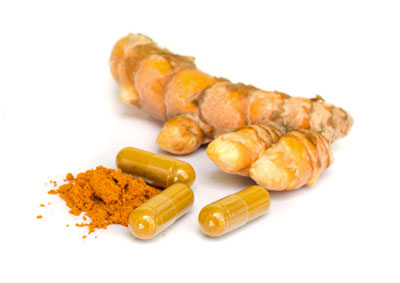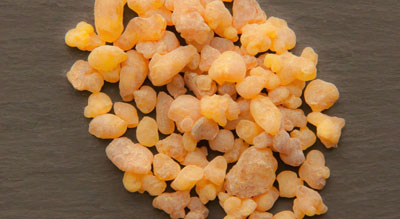Joint pain is one of the most common ailments worldwide. The International Association for the Study of Pain (IASP) defines it as “an unpleasant sensory and emotional experience associated with actual or potential tissue damage, or described in terms of such damage.”
Chronically affected patients experience a general loss of quality of life. Globally, 29.3% of women and 24.4% of men suffer from acute joint pain (Germany, 2017). In both genders, the joints most affected are the shoulder, knee and hip joints, with the pain increasing with age.1
In the UK (2017), it has been estimated that 54% of adults who are aged 45 and older are suffering from multisite peripheral joint pain.2
As illustrated by the United States National Health Interview Survey, an estimated 52.5 million adults are diagnosed with arthritis, and 22.7 million adults suffer from arthritis and arthritis-attributable activity limitations. It is estimated that by the year 2030, 67 million people will be diagnosed with arthritis.3 The economic impact of joint pain is also substantial.

Haldi (Curcuma longa)
Turmeric (Curcuma longa) is a well-known Indian spice of that has received a great deal of interest from both the medical and scientific worlds.
Turmeric is a rhizomatous herbaceous perennial plant of the ginger family and has been used in India for more than 2500 years in Ayurvedic medicine to treat a variety of ailments.
The orange polyphenolic active principles are composed of three primary curcuminoids — curcumin, demethoxycurcumin (DMC) and bisdemethoxycurcumin (BDMC) — which comprise around 70–80, 15–20 and 2.5–10% of the total curcuminoids, respectively.
Vidya’s turmeric extracts (Puremeric) are characterised by the three curcuminoids, as analysed by HPLC, an isotopic 14C assay and DNA testing to prove their natural origin and the absence of any synthetic substitutes.
The botanical variety is guaranteed by a botanist and complete traceability is ensured from the field to the product. Turmeric has been used for centuries for a wide range of ailments, of which joint pain is an important one.
The ability of turmeric to relieve joint pain and to slow pain progression has been studied on different animal models. In an osteoarthritis model using destabilisation of the medial meniscus (DMM), orally administrated curcumin significantly reduced osteoarthritis (OA) disease progression.4
Curcumin has been found to show anti-inflammatory activity by inhibiting some of the enzymes and cytokines involved in cell membrane inflammation, such as OLA2, COX-2 and 5-LOX, and by inhibiting the transcription of NF-kB.
In relation to NF-kB, synovial fibroblasts cultured from human rheumatoid arthritis (RA) patients have shown that the inhibition of NF-kB activation and nuclear translocation suppress IL-1ß and OSM-induced MMP-1, MMP-3, MMP-9 and MMP-13 gene expression by human chondrocytes.5
To summarise, curcumin is a highly pleiotropic molecule with an excellent safety profile; its potency to target multiple inflammatory diseases undoubtedly indicates curcumin as a great potential agent to treat OA.6 In a randomised pilot study, the efficacy of curcumin alone and in combination with diclofenac sodium was assessed in patients with active RA.
Patients in the curcumin group showed the highest percentage of improvement in overall Disease Activity Score and American College of Rheumatology scores, which were significantly better than those of the patients in the diclofenac sodium group.7
In another trial, the clinical efficacy of curcuminoids in patients suffering from knee OA was investigated. Patients were assigned to curcuminoids (1500 mg/day in three divided doses) or a matched placebo for 6 weeks. Treatment with curcuminoids was associated with significantly greater reductions in WOMAC, VAS and LPFI scores compared with the placebo.8
The available data from published in vitro and in vivo studies suggest that curcumin could be a beneficial complementary treatment for OA in humans. Nevertheless, owing to the physicochemical properties of curcuminoids, a new form is required to improve its solubility, absorption and bioavailability.
To remedy the situation, Vidya Herbs developed a naturally bioavailability enhanced curcuminoid concentrate: Vi-Active. To compare Vi-Active with a standard turmeric extract, both standardised for 95% curcuminoids, a randomised clinical study was done on 24 volunteers.
In a two-period design, 12 healthy subjects were included in each group. Two single doses (500 mg) were administered with a washout period of 7 days between each consumption; curcumin plasma concentration was monitored by LC-MS/MS. At the maximum absorption time, the curcumin plasma concentration in the Vi-Active group was found to be more than 2.2-fold higher than in the standard turmeric group.

Shallaki (Boswellia serrata)
Boswellia serrata is native to much of India, especially the Punjab region; in Ayurvedic medicine, some parts of Boswellia bark are peeled away to yield a gummy oleoresin that has been used for hundreds of years to treat arthritis.
3-Oacetyl-11-keto-beta-boswellic acid (AKBA) is the most active component of Boswellia extract and has been demonstrated to be a potent inhibitor of 5-LOX, which is a key enzyme in the biosynthesis of leukotrienes from arachidonic acid in the cellular inflammatory cascade.
Extracts from the oleoresin of Boswellia serrata are characterised by their content in four pentacyclic triterpene acids, with beta-boswellic acid being the major constituent.
Vidya offers extracts from 30–90% boswellic acids or by standardised 30% AKBA content. All our Shallaki extracts are completely traceable with a botanical certificate of origin and comply with the highest standards of quality.
Boswellic acids and AKBA have been shown to decrease the production of proinflammatory cytokines such as IL-1, IL-2, IL-6, IFN-gamma and TNF-alpha, all of which are associated with the destruction of joint tissues such as cartilage. NFkB is considered to be the target of AKBA.9
In a double-blind, placebo-controlled trial, Boswellia demonstrated beneficial effects on knee OA. For 8 weeks, 30 patients received either 1000 mg of Boswellia daily or a placebo in three divided doses.
Patients in the Boswellia group experienced a significant decrease in pain and swelling, and an increased range of motion compared with the placebo.10
Boswellia serrata could also be interesting because of its analgesic properties. Using experimental pain models in human healthy volunteers, pain threshold and pain tolerance force and time were increased compared with a placebo.11
Specifically focusing on AKBA, a double-blind, randomised, placebo-controlled study using a 30% AKBA Boswellia extract showed that it reduced pain and significantly improved physical function in OA patients. Reducing the enzymatic degradation of cartilage was mentioned as a mechanism of action.12
Numerous studies on turmeric and Boswellia — in both traditional medicine and modern trials — have demonstrated their ability to relieve joint pain. One might well question what would happen if they were used together. And the answer is that this combination is also effective.
A mixture of Curcuma longa and Boswellia serrata has been shown to be more efficient than a standard dose of celecoxib (a selective COX-2 inhibitor) in the treatment of osteoarthritis, improving the condition of the patients — both objectively and subjectively — with no toxicity detectable by clinical examination and laboratory tests.13
With these two types of high quality herbal extracts, founded on modern science and Ayurvedic tradition, an efficient and natural solution to joint pain could be offered to consumers who are looking for alternative solutions to improve their health and well-being.
References
1. J. Fuchs and F. Prütz, “Prevalence of Joint Pain in Germany,” Journal of Health Monitoring 2(3), 62–67 (2017).
2. A. Finney, et al., “Multisite Peripheral Joint Pain: A Cross-Sectional Study of Prevalence and Impact on General Health, Quality of Life, Pain Intensity and Consultation Behaviour,” BMC Musculoskelet. Disord. 18(1), 535 (2017).
3. T. Neogi, “Joint Pain Epidemiology, FACT SHEET No. 11,” International Association for the Study of Pain (2016).
4. Z. Zhang, et al., “Curcumin Slows Osteoarthritis Progression and Relieves Osteoarthritis-Associated Pain Symptoms in a Post-Traumatic Osteoarthritis Mouse Model,” Arthritis Research & Therapy 18, 128 (2016).
5. Y. Henrotin, et al., “Biological Actions of Curcumin on Chondrocytes,” Osteoarthritis and Cartilage 18, 141–149 (2010).
6. Y. Henrotin, et al., “Curcumin: A New Paradigm and Therapeutic Opportunity for the Treatment of Osteoarthritis: Curcumin for Osteoarthritis Management,” SpringerPlus 2, 56 (2013).
7. B. Chandran and A. Goel, “A Randomized Pilot Study to Assess the Efficacy and Safety of Curcumin in Patients with Active Rheumatoid Arthritis,” Phytother. Res. 26, 1719–1725 (2012).
8. Y. Panahi, et al., “Curcuminoid Treatment for Knee Osteoarthritis: A Randomized Double-Blind Placebo-Controlled Trial,” Phytother. Res. 28(11), 1625–1631 (2014).
9. H.P. Ammon, “Boswellic Acids and Their Role in Chronic Inflammatory Diseases,” Adv. Exp. Med. Biol. 928, 291–327 (2016).
10. N. Kimmatkar, et al., “Efficacy and Tolerability of Boswellia serrata Extract in Treatment of Osteoarthritis of Knee – A Randomized Double-Blind Placebo Controlled Trial,” Phytomedicine 10, 3–7 (2003).
11. K Prabhavathi, et al., “A Randomized, Double-Blind, Placebo-Controlled, Crossover Study to Evaluate the Analgesic Activity of Boswellia serrata in Healthy Volunteers Using Mechanical Pain Model,” Indian J. Pharmacol. 46(5), 475–479 (2014).
12. K. Sengupta, et al., “A Double-Blind, Randomized, Placebo-Controlled Study of the Efficacy and Safety of 5-Loxin for Treatment of Osteoarthritis of the Knee,” Arthritis Research & Therapy 10(4), 1–11 (2008).
13. R. Kizhakkedath, “Clinical Evaluation of a Formulation Containing Curcuma longa and Boswellia serrata Extracts in the Management of Knee Osteoarthritis,” Mol. Med. Rep. 8(5), 1542–1548 (2013).




